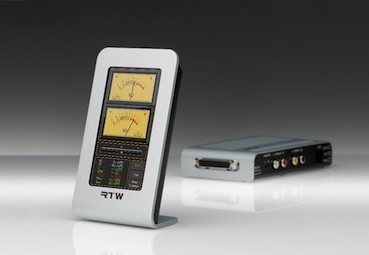- RTW, a vendor of visual audio meters for professional broadcast, production, post production and quality control, will exhibit its TM3, TM3-3G and TM9 TouchMonitors at the Group One booth (613) during this year’s InfoComm 2013.
RTW TM3.
All products will be fully equipped with the latest software options, including the new moving-coil software for the TM3 models. Attendees are invited to stop by the Group One booth for a demonstration of the equipment. Christopher Spahr, RTW’s newly appointed director of U.S. sales and operations, will be on hand to discuss the products and the company’s new U.S. location.
TM3 and TM3-3G TouchMonitors
Controlled using a touch-sensitive display, the TM3 has a budget-friendly base price, a 4.3-inch touchscreen and stylish exterior allowing for horizontal and vertical placement. It includes a large number of graphical and numerical instruments showing single-channel and summing-loudness bargraphs, PPM, true peak, SPL, loudness range (LRA), dialnorm and correlation.
The newer TM3-3G is a versatile solution for metering, de-embedding and monitoring 3G-SDI audio. It also features a compact 4.3-inch touchscreen for horizontal as well as vertical orientation, which can display any selection of up to eight audio channels contained in an SDI stream.
Both models feature PPM and true-peak instruments and offer comprehensive loudness metering in compliance with all globally relevant standards, including EBU R128, ITU BS.1770-3/1771-1, ATSC A/85 and ARIB. They also feature the Magic LRA instrument, specifically designed by RTW, for intuitive visualization of the loudness range and integrated-loudness parameters. Finally, the TM3 on display will be equipped with the new TM3-SWMC Software license, available as an add-on option, which incorporates a moving-coil emulation display.
TM9 TouchMonitor
The TM9 TouchMonitor, which includes the Magic LRA instrument, features a nine-inch touch-sensitive display, provides flexibility and modularity, combined with intuitive control. The software visualizes multiple sources simultaneously. It supports displaying the same signal on multiple instruments in parallel, each with dedicated defaults with both horizontal and vertical operation. The system visualizes up to 16 analog and/or digital sources at the same time.











